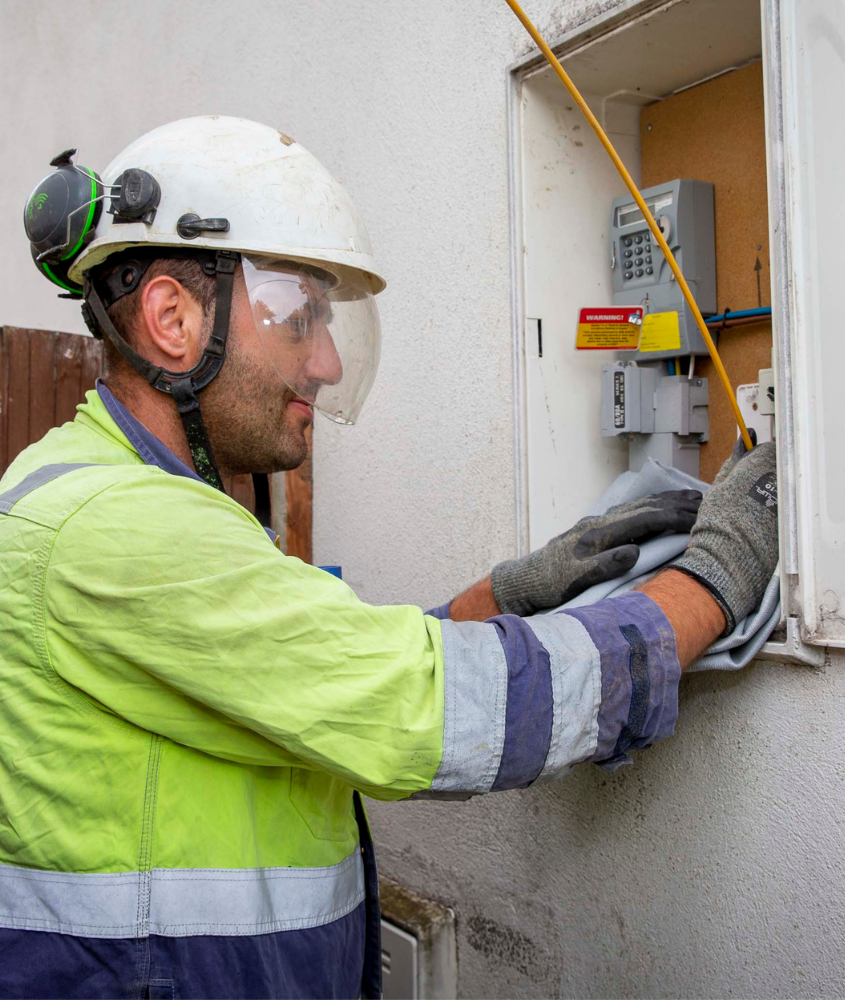 The gold standard, what does it mean? It’s a term thrown about by many that can be applied to virtually anything: broadband, accommodation, even a cup of coffee.
For myself, as CTO of SIRO, it means achieving and maintaining superior quality of customer service that inspires others to follow suit. Irish people have always valued quality customer service that’s delivered with care. Since the pandemic, there has been a notable shift in customers valuing trust and mutual understanding from their service providers. A recent survey from The CX Company noted that companies need to show “massive commitment, collaboration, energy and passion” to satisfy the emotional drivers that add to the customer experience. As a CTO of SIRO, with years’ experience of service delivery in telecommunications, one thing each internet service provider (ISP) needs to excel is: Agility.
The ability to react to a changing environment is critical. As is the ability to identify and resolve an issue in a timely manner. SIRO is a wholesale open access network with 19 retailers, and during the pandemic, we were deemed as an essential “critical” service, which meant two things: the people of Ireland needed us, and the pressure was on. Our SSPs had to adapt to ever changing restrictions and guidelines all while ensuring that our customers could carry on working during a global pandemic. So how does an open access wholesaler with 19 retailers ensure that our customers experience in “the last mile” is positive?
The gold standard, what does it mean? It’s a term thrown about by many that can be applied to virtually anything: broadband, accommodation, even a cup of coffee.
For myself, as CTO of SIRO, it means achieving and maintaining superior quality of customer service that inspires others to follow suit. Irish people have always valued quality customer service that’s delivered with care. Since the pandemic, there has been a notable shift in customers valuing trust and mutual understanding from their service providers. A recent survey from The CX Company noted that companies need to show “massive commitment, collaboration, energy and passion” to satisfy the emotional drivers that add to the customer experience. As a CTO of SIRO, with years’ experience of service delivery in telecommunications, one thing each internet service provider (ISP) needs to excel is: Agility.
The ability to react to a changing environment is critical. As is the ability to identify and resolve an issue in a timely manner. SIRO is a wholesale open access network with 19 retailers, and during the pandemic, we were deemed as an essential “critical” service, which meant two things: the people of Ireland needed us, and the pressure was on. Our SSPs had to adapt to ever changing restrictions and guidelines all while ensuring that our customers could carry on working during a global pandemic. So how does an open access wholesaler with 19 retailers ensure that our customers experience in “the last mile” is positive?
“We were deemed as an essential “critical” service, which meant two things: the people of Ireland needed us, and the pressure was on”
For starters, one of the key roles we have as a wholesaler, is supporting our retailers. Our retailers set the performance, as ultimately, they provide the service. So, our role is ensuring our retailers have the appropriate tools to manage their “service” end. Our installers, for example, can provide a heatmap to measure the performance of our connectivity in a home and determine which is the best place for our customers to place their modem. We provide the connection and the CPE (Customer Premises Equipment) and deploy engineers to complete the last steps in the connection. This ensures that our customers receive the highest standards of care and service. Our ultimate goal is to meet our customer expectations, as we are passionate that a SIRO connection is the last you’ll truly need.
 While our retailers primarily offer residential services, the same level of care and innovation is provided for our enterprise connections too.
Some of our retailers have begun looking at Fibre to the Room, expanding on the concept of FTTH. Vodafone, for example, provide Wifi enhancement tools for homes that may have difficulty connecting in varying parts of the home. This is known as their “Super-Wifi” product which is having huge success. On average, an Irish home contains 15-20 devices that are Wi-Fi-enabled or connected to the internet, and we foresee that growing each year. As devices develop and demand grows, we as an ISP must continue to innovate, adapt and improve our services to accommodate.
Wifi-Six or “11ax” is a Wi-Fi enhancement tool that will enable better utilisation of the bandwidth provided, which we foresee as a tool that can enhance the in-home broadband experience for our customers and reduce the number of calls to centres.
As a wholesaler, SIRO are happy to support our retailers in ensuring our customers connection remains optimal. We need to ensure that we are providing our retailers with the level of support that’s required to ensure each customer receives the gold standard of service, at each step in their connection.
When SIRO first began its journey, we were a small wholesaler with very few retail partners. We had a vision of bridging the digital divide between Dublin and regional Ireland with pure fibre connectivity. Ireland had fewer than 11,000 fibre connections, and the incumbent Eir had the lion’s share of the broadband market with xDSL connectivity.
Now, we’ve achieved “Five 9s” availability and enabled over 400,000 homes with 100% fibre connectivity, all while balancing the delicate relationship between wholesaler and service provider.
Search Your Eircode today to connect to SIRO 100% Fibre Broadband.
While our retailers primarily offer residential services, the same level of care and innovation is provided for our enterprise connections too.
Some of our retailers have begun looking at Fibre to the Room, expanding on the concept of FTTH. Vodafone, for example, provide Wifi enhancement tools for homes that may have difficulty connecting in varying parts of the home. This is known as their “Super-Wifi” product which is having huge success. On average, an Irish home contains 15-20 devices that are Wi-Fi-enabled or connected to the internet, and we foresee that growing each year. As devices develop and demand grows, we as an ISP must continue to innovate, adapt and improve our services to accommodate.
Wifi-Six or “11ax” is a Wi-Fi enhancement tool that will enable better utilisation of the bandwidth provided, which we foresee as a tool that can enhance the in-home broadband experience for our customers and reduce the number of calls to centres.
As a wholesaler, SIRO are happy to support our retailers in ensuring our customers connection remains optimal. We need to ensure that we are providing our retailers with the level of support that’s required to ensure each customer receives the gold standard of service, at each step in their connection.
When SIRO first began its journey, we were a small wholesaler with very few retail partners. We had a vision of bridging the digital divide between Dublin and regional Ireland with pure fibre connectivity. Ireland had fewer than 11,000 fibre connections, and the incumbent Eir had the lion’s share of the broadband market with xDSL connectivity.
Now, we’ve achieved “Five 9s” availability and enabled over 400,000 homes with 100% fibre connectivity, all while balancing the delicate relationship between wholesaler and service provider.
Search Your Eircode today to connect to SIRO 100% Fibre Broadband. 
 This week, SIRO announced that we’re launching Ireland’s first
This week, SIRO announced that we’re launching Ireland’s first  My second answer was that providing extra bandwidth allows our partner retail telcos to be innovative in the services they provide. For example, they might dedicate 500Mb to your gaming console; 500Mb to your remote working devices, to ensure lag-free video conferencing; and 1Gb to the general house Wi-Fi. We already see this happening in other countries where 2Gb services have been around for longer, and we’re looking forward to watching Irish broadband providers use SIRO connection to come up with innovative ways to make the most of the extra bandwidth we can now provide.
My second answer was that providing extra bandwidth allows our partner retail telcos to be innovative in the services they provide. For example, they might dedicate 500Mb to your gaming console; 500Mb to your remote working devices, to ensure lag-free video conferencing; and 1Gb to the general house Wi-Fi. We already see this happening in other countries where 2Gb services have been around for longer, and we’re looking forward to watching Irish broadband providers use SIRO connection to come up with innovative ways to make the most of the extra bandwidth we can now provide.
 As more people move to working from home, businesses increasingly depend on high-quality fibre connections for video calls, remote access, and backing up increasing volumes of data. We saw this in action when we upgraded Cartoon Saloon to our symmetric fibre services during lockdown last year, so that they could continue to work on their Academy Award-nominated film Wolfwalkers while their staff remained safely remote. Getting more businesses online with more reliable fibre connections is key to helping Irish companies evolve and compete globally for both business and talent.
As more people move to working from home, businesses increasingly depend on high-quality fibre connections for video calls, remote access, and backing up increasing volumes of data. We saw this in action when we upgraded Cartoon Saloon to our symmetric fibre services during lockdown last year, so that they could continue to work on their Academy Award-nominated film Wolfwalkers while their staff remained safely remote. Getting more businesses online with more reliable fibre connections is key to helping Irish companies evolve and compete globally for both business and talent.

 In our second instalment of the
In our second instalment of the 

 Is it time for Irish homes to get smarter? SIRO's Head of Operations Cian O’Mahony gives his views on the life-changing potential of smart homes.
Is it time for Irish homes to get smarter? SIRO's Head of Operations Cian O’Mahony gives his views on the life-changing potential of smart homes.
 On 17 June last, SIRO brought together a range of experts from the Irish video gaming industry, as part of our webinar “Gaming for Growth”. With diverse speakers from game development, eSports promotion and the IDA, the event explored if and how Ireland can grow the sector here further.
The context to asking the question was important.
The global video gaming industry is huge, valued at €140 billion annually. This makes it’s value twice that of the music, TV and film industries combined. It’s also an industry experiencing unprecedented global growth; up to 10% year-on-year.
These numbers alone should make all stakeholders focused on economic growth and job creation sit up and take notice.
Financial muscle apart, video gaming growth is now pervasive; it’s immersion across society evident all around us.
Video games, already a significant consumer product before Covid-19, strengthened their market share of the entertainment sector even more during the pandemic. A recent Deloitte study found that
On 17 June last, SIRO brought together a range of experts from the Irish video gaming industry, as part of our webinar “Gaming for Growth”. With diverse speakers from game development, eSports promotion and the IDA, the event explored if and how Ireland can grow the sector here further.
The context to asking the question was important.
The global video gaming industry is huge, valued at €140 billion annually. This makes it’s value twice that of the music, TV and film industries combined. It’s also an industry experiencing unprecedented global growth; up to 10% year-on-year.
These numbers alone should make all stakeholders focused on economic growth and job creation sit up and take notice.
Financial muscle apart, video gaming growth is now pervasive; it’s immersion across society evident all around us.
Video games, already a significant consumer product before Covid-19, strengthened their market share of the entertainment sector even more during the pandemic. A recent Deloitte study found that  SIRO’s Chief Commercial Officer, Ronan Whelan joined Mary O’Neill on WLR FM to discuss SIRO’s €7.5 million investment, connecting over 9,000 homes and businesses in Waterford city to 100% fibre broadband.
SIRO’s Chief Commercial Officer, Ronan Whelan joined Mary O’Neill on WLR FM to discuss SIRO’s €7.5 million investment, connecting over 9,000 homes and businesses in Waterford city to 100% fibre broadband.